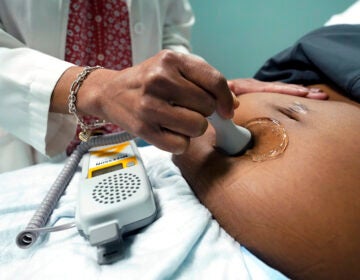Advice for medical providers on addressing their own biases
Providers need to be willing to engage in discussions about race, ethnicity, and other social identities, and how they affect health disparities.

The conversations that need to happen to provide better care to all patients require discussing and addressing systemic and institutional biases that affect health care. (sweet_tomato/Big Stock Image)
This story is part three of a three-part series, From exclusion to inclusion: A Black medical student chronicles his efforts to bring health disparities to light. Read parts one and two.
Throughout medical school, one of the things that I have often thought about is how bias can creep into the doctor’s office and prevent good care.
During my first year of medical school, I experienced this firsthand while working in a clinic with a family physician. I arrived bright and early in the morning, excited to experience one of my first opportunities to shadow physicians and see how they interacted with patients.
As we were going over the patient schedule for the day, the doctor I was working with pointed at the name of one patient and said: “Ah, this is going to be an interesting patient. She’s always going around asking for medication when she doesn’t need it. I’m not giving her anything today. She’ll be a great patient to understand drug-seeking behavior.”
The patient came in later that afternoon. When she walked in, I immediately noticed that she looked weak and tired as she sat on the edge of the bed. Thankfully, despite the comment that the doctor had made earlier, she began asking the patient questions about her symptoms. It became clear that the patient was experiencing some type of infection. After finishing the physical exam, it was determined that the patient had pyelonephritis, a bacterial infection of the kidneys that can be extremely painful.
As I was walking out of the room, all I could think about was how important it is to leave assumptions and judgment out of the exam room, especially when they’re written in someone’s patient chart. The things medical professionals note down on charts, their observations, or even what they tell a colleague about a patient, can have significant weight on whether a patient will or won’t be believed — even before a doctor lays eyes on them. It can significantly impact how a patient is viewed, and their initial exams.
A recent study that was published in JAMA Open Network found that stigmatizing language in hospital notes like “nonadherence,” “unwilling,” “drug seeking,” and “abuser” were more often used to describe non-Hispanic Black patients. Wrestling with the internal biases that we all have is important to creating a more equitable health care system that doesn’t leave those that are disadvantaged even further behind. Even when it seems like someone is showing “drug-seeking” behavior, we must remember to treat every visit as an individual, isolated point in time.
The conversations that need to happen to provide better care to all patients require discussing and addressing systemic and institutional biases that affect health care. Providers need to be willing to engage in discussions about race, ethnicity, and other social identities, and how they affect health disparities. Health care providers should work collaboratively with patients and their communities to develop culturally responsive care plans that address their unique needs and preferences.
Medical education has to do a better job of incorporating topics about systemic and implicit biases in medicine into curricula. It’s up to all of us to better understand how these biases continue to impact the care that patients receive every day.
This story is part three of a three-part series, From exclusion to inclusion: A Black medical student chronicles his efforts to bring health disparities to light. Read parts one and two.
Joel Bervell is a Ghanaian-American medical student studying at Washington State University, Elson S. Floyd College of Medicine. Across social media, Joel is better known to his over 800K followers as the ‘‘Medical Mythbuster” for creating content that is tackling biases in healthcare and other industries. Follow him on Instagram, Twitter and TikTok @joelbervell.
Support for WHYY’s coverage of health equity issues comes from the Commonwealth Fund.
WHYY is your source for fact-based, in-depth journalism and information. As a nonprofit organization, we rely on financial support from readers like you. Please give today.






